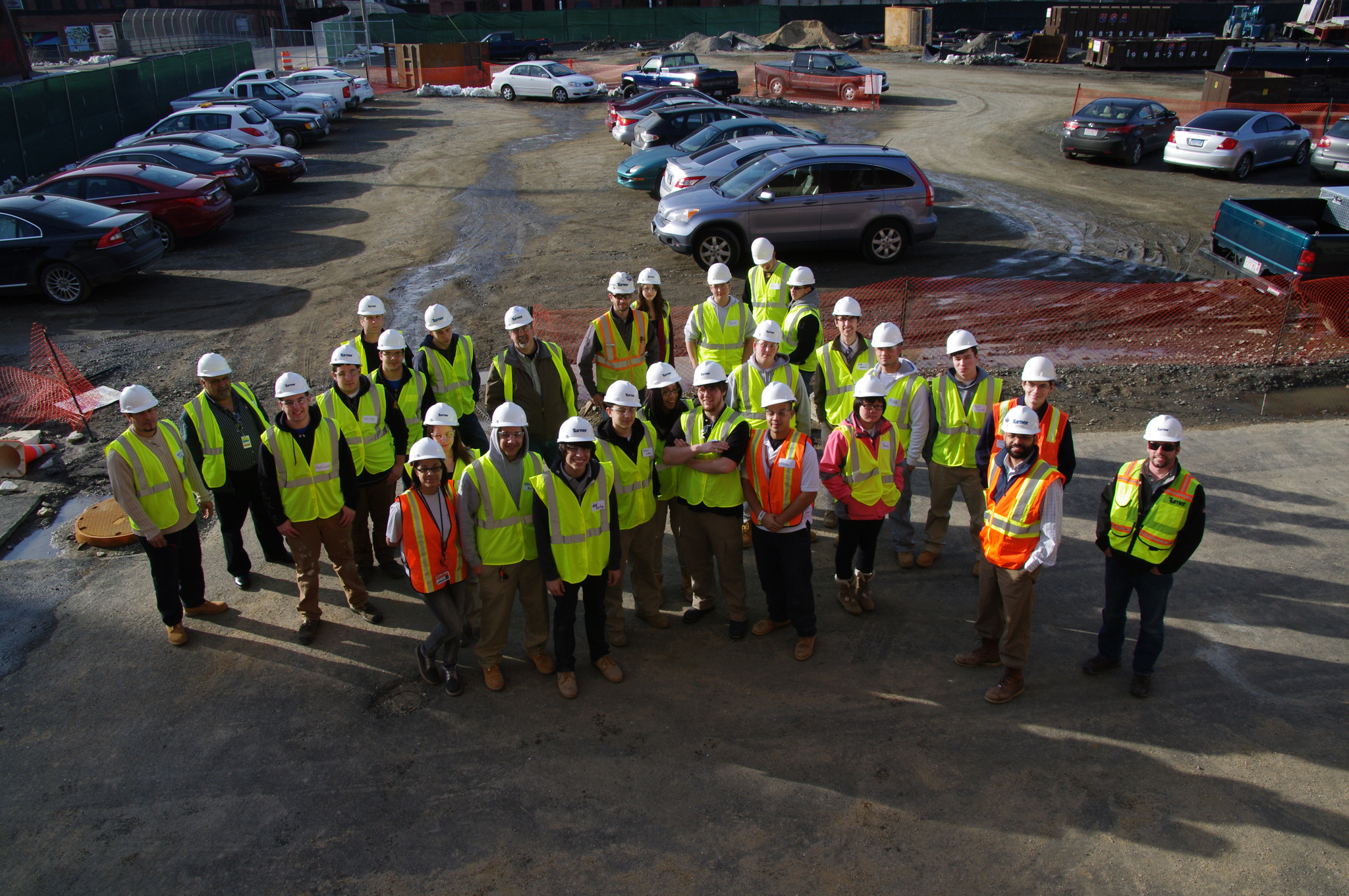
by Helen Hill
Since January, Turner Construction has been running, a two-weekly, 10 session after school program for vocational high-school students at the MGHPCC job-site. As part of its national Youthforce 2020 program, designed to encourage kindergarten through high school students to consider careers in technical fields from construction to computer science, members of the Turner team work with students interested in design and engineering, fostering those interests and offering themselves as role models. Lessons look to create a real world connection to the STEM (science, technology, engineering and math) curriculum students are being given in the classroom.
The MGHPCC program features architects, electricians, heavy equipment operators, plumbers, software designers and other specialists, each of whom detail their contribution to the construction process. Turner's staff facilitate connecting students to resources that they may not normally have access to. The students not only see the project progress every two weeks but also see real world science, physics, computer science in action and discuss management lessons to implement success. The program also provides students career and real world how-to information. Each 2 hour sessions includes a tour of the facility and some activity linked to a particular aspect of the construction process.
For captions view in full-screen mode...
Around 30 students from four area schools (Dean Technical High School, Chicopee Comprehensive High School, Cathederal High School and Westfield Vocational Technical High School) have been participating. So far the program has covered both structural and MEP (mechanical/electical/plumbing) design, introduced different trades (plumbing, HVAC., electrical etc), and how to read architectural and MEP drawings to tease apart the complex web of separate systems (eg HVAC, electrical, plumbing, and sprinkler) the facility houses. As part of this the students have had a unique introduction to the role of technology in construction, in particular through hands-on experience with BIM or Building Information Modeling (visualisations from which can be seen in the Under the Hood video from last month). They have also covered the process of estimating and pricing the cost of a project.
Recently I tagged along to find out how things are going.
After the regular tour of the work-site - hard hats and safety vests all round - and an update on building progress, the session I attended centered around a presentation by MGHPCC information technology lead Jim Culbert. Jim had come out from MIT to help familiarize the students with the different IT-related components of the facility. He was also there to share his own experience as an electrical engineer and IT professional.
Beginning by talking about his background and career, Culbert gave an engaging presentation, covering what high performance computing actually is, some of the kinds of research that will go on in the building, the unique requirements of a data center of this size and finally the components of the IT system.
"What keeps me awake at night is worrying about if the power goes out - back-up power for the computers and back-up power for the system that handles the heat all those computers generate", Culbert explained. What might have been a rather dry presentation - compared with some of the other more hands-on earlier sessions - was made easier by Culbert's affable style and by the end the students were chatting freely (over pizza) with Turner staff members and accompanying school teachers.
The program continues through April with the final few sessions dedicated to the elements of "building Green", including an introduction to LEED certification and a tour of the Holyoke HG&E hydro-electric power plant and dam, source of the power for the MGHPCC facility.
The program works with local charities to provide competitive scholarship funds for career training especially targetting program participants. On the day of my visit, Turner Construction Senior Project Executive Jim Wachala announced his company will give a $1000 scholarship to a student from each of the four schools at the completion of the class. Students will be judged on the basis of an essay about their experience of this Spring's program.
Thanks to all the participants but especially Jim Wachala, Eudad Gonzlaez, Tim Driscoll, Mary Belisle and Jim Culbert for their help with this article.